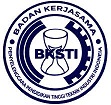Safety improvement through root cause analysis and hazard control in lift installation
Abstract
Keywords
Full Text:
PDFReferences
A. Bourahla, G. Fernandes, and L. M. D. F. Ferreira, “Managing occupational health and safety risks in construction projects to achieve social sustainability - A review of literature,” Procedia Comput. Sci., vol. 239, pp. 1053–1061, 2024, doi: 10.1016/j.procs.2024.06.269.
I. P. Nguembi, L. Yang, and V. S. Appiah, “Safety and risk management of Chinese enterprises in Gabon’s mining industry,” Heliyon, vol. 9, no. 10, p. e20721, 2023, doi: 10.1016/j.heliyon.2023.e20721.
K. Jilcha, “Vision zero for industrial workplace safety innovative model development for metal manufacturing industry,” Heliyon, vol. 9, no. 11, p. e21504, 2023, doi: 10.1016/j.heliyon.2023.e21504.
P. C. Liao, Z. Ma, and H. Y. Chong, “Identifying effective management factors across human errors – A case in elevator installation,” KSCE J. Civ. Eng., vol. 22, no. 9, pp. 3204–3214, 2018, doi: 10.1007/s12205-017-1726-z.
S. Lu, L. Zhou, H. Zhang, Y. Feng, K. Zhong, and Y. Liao, “Analysis of occupational hazard factors and control measures at a shoe factory,” Adv. Transdiscipl. Eng., vol. 17, no. 12, pp. 676–680, 2021, doi: 10.3233/ATDE210337.
P. C. Liao, H. Chen, and X. Luo, “Fusion model for hazard association network development: A case in elevator installation and maintenance,” KSCE J. Civ. Eng., vol. 23, no. 4, pp. 1451–1465, 2019, doi: 10.1007/s12205-019-0646-5.
T. D. Smith, D. M. DeJoy, and M. A. Dyal, “Safety specific transformational leadership, safety motivation and personal protective equipment use among firefighters,” Saf. Sci., vol. 131, p. 104930, Jul. 2020, doi: 10.1016/j.ssci.2020.104930.
S. T. Odonkor and A. M. Sallar, “Occupational health and safety knowledge, attitudes and practices among healthcare workers in Accra Ghana,” Sci. Afr., vol. 24, p. e02130, 2024, doi: 10.1016/j.sciaf.2024.e02130.
S. M. Arnold et al., “Occupational hazards in medium and large scale industrial sectors in Sri Lanka: Experience of a developing country,” BMC Res. Notes, vol. 12, no. 1, pp. 1–5, 2019, doi: 10.1186/s13104-019-4790-2.
X. Liu et al., “Fault root cause analysis based on Liang–Kleeman information flow and graphical lasso,” Entropy, vol. 27, no. 2, p. 213, 2025, doi: 10.3390/e27020213.
B. Torrents-Masoliver et al., “Hazard control through processing and preservation technologies for enhancing the food safety management of infant food chains,” Glob. Pediatr., vol. 2, p. 100014, May 2022, doi: 10.1016/j.gpeds.2022.100014.
Q. Guo, F. Li, H. Liu, and J. Guo, “Anomaly detection and root cause analysis for energy consumption of medium and heavy plate: A novel method based on Bayesian neural network with Adam variational inference,” Algorithms, vol. 18, no. 1, p. 11, 2025, doi: 10.3390/a18010011.
Q. Ma, J. Long, X. Shi, Z. Liu, and Y. Guo, “Temporal constrained dynamic uncertain causality graph for root cause analysis of intermittent faults,” Eksploat. Niezawodn. – Maint. Reliab., vol. 27, no. 1, pp. 1–2, 2024, doi: 10.17531/ein/192169.
F. Z. Salsabila and A. Susanty, “Penerapan ergonomic checklists dalam evaluasi lingkungan kerja pada departemen preventive maintenance PT Phapros Tbk,” in Proc. Seminar Nasional, 2018.
M. Ahmadi, S. Boseh A. Zakerian, and H. Salmanzadeh, “Prioritizing the ILO/IEA ergonomic checkpoints’ measures; a study in an assembly and packaging industry,” Int. J. Ind. Ergon., vol. 59, pp. 54–63, 2017, doi: 10.1016/j.ergon.2017.03.002.
M. Hesami Arani et al., “Health and safety hazards identification and risk assessment in the swimming pools using combined HAZID and ALARP,” Environ. Health Eng. Manag., vol. 7, no. 3, pp. 151–160, 2020, doi: 10.34172/EHEM.2020.18.
M. Nur, V. Valentino, R. K. Sari, and A. A. Karim, “Analisa potensi bahaya kecelakaan kerja terhadap pekerja menggunakan metode Hazard Identification, Risk Assessment and Risk Control (HIRARC) pada perusahaan aspal beton,” J. Teknol. Manaj. Ind. Terap., vol. 2, no. 3, pp. 150–158, 2023, doi: 10.55826/tmit.v2i3.179.
G. Owen and N. Sutapa, “Perancangan pengendalian bahaya pada PT,” J. Titra, vol. 11, no. 1, pp. 49–56, 2023.
R. Abdulrahman, M. Almoshaogeh, H. Haider, F. Alharbi, and A. Jamal, “Development and application of a risk analysis methodology for road traffic accidents,” Alexandria Eng. J., vol. 111, pp. 293–305, 2025, doi: 10.1016/j.aej.2024.10.045.
D. Pietsch, M. Matthes, U. Wieland, S. Ihlenfeldt, and T. Munkelt, “Root cause analysis in industrial manufacturing: A scoping review of current research, challenges and the promises of AI-driven approaches,” J. Manuf. Mater. Process., vol. 8, no. 6, p. 277, 2024, doi: 10.3390/jmmp8060277.
F. Musavi, R. Hekmatshoar, M. Fallahi, A. Moradi, and M. Yazdani-Aval, “Identifying and preventing human error in the sugar production process: A multi-stage approach using HTA, HEC and PHEA techniques,” Heliyon, vol. 10, no. 9, p. e29687, 2024, doi: 10.1016/j.heliyon.2024.e29687.
C. Davison, T. P. Cotrim, and S. Gonçalves, “Ergonomic assessment of musculoskeletal risk among a sample of Portuguese emergency medical technicians,” Int. J. Ind. Ergon., vol. 82, p. 103077, Apr. 2021, doi: 10.1016/j.ergon.2020.103077.
A. O. Morris, A. Gilson, M. A. Chui, and K. Xiong, “Utilizing a cognitive engineering approach to conduct a hierarchical task analysis to understand complex older adult decision-making during over-the-counter medication selection,” Res. Soc. Adm. Pharm., vol. 17, no. 12, pp. 2116–2126, 2021, doi: 10.1016/j.sapharm.2021.07.005.
D. M. Safitri and N. Azmi, “Improving safety culture and increasing driver’s safety awareness of intercity bus in the Greater Jakarta Area,” in Proc. Int. Conf., 2023.
S. H. Fatima, P. Rothmore, L. C. Giles, and P. Bi, “Impacts of hot climatic conditions on work, health, and safety in Australia: A case study of policies in practice in the construction industry,” Saf. Sci., vol. 165, p. 106197, May 2023, doi: 10.1016/j.ssci.2023.106197.
F. Ariswa, M. Andriani, and H. Irawan, “Usulan perbaikan penerapan sistem manajemen keselamatan dan kesehatan kerja (SMK3) pada perusahaan konstruksi jalan (Studi kasus: PT Karya Shakila Group),” J. Integr. Sist. Ind., vol. 7, no. 2, pp. 91–100, 2020, doi: 10.24853/jisi.7.2.91-100.
I. Pramudya, D. Andesta, and Hidayat, “Safety application and health work (K3) at department of CNC lathe using Hazard Identification Risk Assessment and Risk Control (HIRARC) method (Case study of PT. Swadaya Graha),” J. Appl. Eng. Technol. Sci., vol. 4, no. 1, pp. 318–324, 2022, doi: 10.37385/jaets.v4i1.1114.
M. Halinen, H. Tiirinki, A. Rauhala, S. Kiili, and T. Ikonen, “Root causes behind patient safety incidents in the emergency department and suggestions for improving patient safety – An analysis in a Finnish teaching hospital,” BMC Emerg. Med., vol. 24, no. 1, pp. 1–19, 2024, doi: 10.1186/s12873-024-01120-9.
A. K. M. Nora and S. M. Laksono, “Pengendalian risiko kecelakaan HSSE pada proses pembuatan pipa baja,” J. Tek. ITS, vol. 10, no. 2, pp. 52–57, 2021.
M. R. Saifudin and S. Sukanta, “Identifikasi risiko keselamatan pekerja dengan metode FMEA di departemen produksi PT. XYZ,” J. Asiimetrik J. Ilm. Rekayasa Inov., vol. 5, no. 2, pp. 189–198, 2023, doi: 10.35814/asiimetrik.v5i2.4558.
K. I. Ismara et al., Buku Ajar Keselamatan dan Kesehatan Kerja (K3), Yogyakarta, Indonesia: Univ. Negeri Yogyakarta, 2014, pp. 62–74.
A. Simanullang, M. Siagian, W. Y. Sihotang, A. K. Panjaitan, and A. Ginting, “Hubungan perilaku dengan kejadian dermatitis kontak iritasi pada karyawan pencucian mobil di Fit & Go Medan,” J. Kesehat. Tambusai, vol. 5, no. 2, pp. 3668–3675, 2024.
J. Dowson, C. Unterhitzenberger, and D. J. Bryde, “Facilitating and improving learning in projects: Evidence from a lean approach,” Int. J. Proj. Manag., vol. 42, no. 1, p. 102559, 2024, doi: 10.1016/j.ijproman.2024.102559.
F. N. Lige, A. Utiarahman, and M. Y. Tuloli, “Evaluasi metode lean construction dan penjadwalan Critical Chain Project Management,” J. Civ. Eng., vol. 3, no. 1, pp. 15–22, 2023, doi: 10.37905/jc.v3i1.71.
S. Khairunnisa, Sugiono, and S. I. K. Sari, “Assessment of occupational safety and health (K3) at drilling sites in upstream oil and gas companies using the RCA and AHP approach,” J. Rekayasa Sist. Manaj. Ind., vol. 1, no. 1, pp. 81–89, 2023.
M. A. F. Hibatullah, E. D. Priyana, and A. W. Rizqi, “Analisis potensi bahaya menerapkan metode JSA dan HIRARC pada departemen civil dan electrical PT. ABC,” INTECOMS J. Inf. Technol. Comput. Sci., vol. 7, no. 3, pp. 948–956, 2024, doi: 10.31539/intecoms.v7i3.10570.
S. Sari, A. Puspita, T. Sulistiyo, M. A. Faruq, and R. Bimantyo, “Analisis potensi bahaya serta rekomendasi perbaikan dengan metode HAZOP dan 5S (Studi kasus: Percetakan PT. XYZ),” MATRIX J. Manaj. Tek. Ind. – Produksi, vol. 22, no. 2, pp. 139–148, 2022, doi: 10.30587/matrik.
V. DiCecco, “Root cause analysis,” in Handbook of Systems Engineering and Management, 2nd ed., A. P. Sage and W. B. Rouse, Eds. Hoboken, NJ, USA: Wiley, 2013, vol. 26, no. 6, pp. 175–198, doi: 10.1007/978-3-319-03910-7_7.
R. Koucheki, J. I. Wolfstadt, J. S. Chang, D. J. Backstein, and J. R. Lex, “Total knee arthroplasty with robotic and augmented reality guidance: A hierarchical task analysis,” Arthroplast. Today, vol. 27, p. 101389, 2024, doi: 10.1016/j.artd.2024.101389.
S. Razak, S. Hignett, J. Barnes, and G. Hancox, “Hierarchical task analysis as a systems mapping tool in complex health care environments: Emergency department response to chemical, biological, radiological, and nuclear events,” Hum. Factors Ergon. Manuf., vol. 34, no. 2, pp. 147–158, 2024, doi: 10.1002/hfm.21016.
E. Park, Y. Seo, S. Han, and M. Cho, “Hazard identification of ammonia FSS for ammonia fuelled ammonia carrier,” J. Ocean Eng. Technol., vol. 38, no. 6, pp. 402–413, 2024, doi: 10.26748/KSOE.2024.078.
DOI: http://dx.doi.org/10.62870/jiss.v11i1.29734
Refbacks
- There are currently no refbacks.
 is supported by
is supported by








